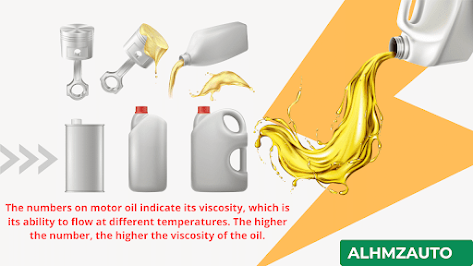An oil change is a crucial part of regular car maintenance. Here's a breakdown of the method, its importance, and some key tips:
Importance of Changing Your Car's Oïl:
Reduces Friction: Engine oil acts like a lubricant, reducing friction between moving parts. This prevents overheating and engine wear.
Cleans and Protects: Oil collects dirt and debris, preventing them from harming the engine. It also coats components to protect against corrosion.
Maintains Performance: Clean oil ensures smooth engine operation, leading to better fuel efficiency and overall performance.
Extends Engine Life: Regular oil changes significantly extend the lifespan of your engine, saving you money in the long run.
Method (DIY with Caution):
Disclaimer: Changing your oil can be messy and requires specific tools and knowledge. If you're not comfortable doing it yourself, take your car to a qualified mechanic.
Here's a simplified overview for experienced DIYers:
Gather Materials: Fresh oil (correct type and viscosity for your car), oil filter, drain pan, socket wrench for the drain plug, funnel, rags, gloves. Consult your car's manual for specific oil type and capacity.
Warm Up the Engine: Run the engine for a few minutes to warm up the oil, making it easier to drain.
Drain the Oil: Locate the drain plug under the car's engine and place the drain pan underneath. Use the wrench to loosen the plug and allow the oil to drain completely.
Replace the Oil Filter: Use the wrench to remove the old oil filter. Be careful, as some oil may spill out. Apply a thin coat of fresh oil to the gasket of the new filter and screw it on hand-tight, then tighten slightly more with the wrench.
Add New Oil: Use the funnel to add fresh oil following the recommended capacity in your car's manual. Check the dipstick frequently to avoid overfilling.
Clean Up and Dispose: Properly dispose of the used oil and filter at a designated recycling center. Never pour used oil down the drain.
Start the Engine: Once everything is tightened and refilled, start the engine and check for leaks around the drain plug and filter. Let the engine run for a few minutes, then turn it off and recheck the oil level on the dipstick. Top up if needed.
Most Important Tips:
Consult Your Car's Manual: It provides specific oil type, capacity, and recommended change intervals.
Safety First: Wear gloves and safety glasses when handling oil. Work in a well-ventilated area.
Don't Overtighten: Tighten the drain plug and filter snugly, but avoid overtightening, which can cause leaks.
Recycle Responsibly: Never pour used oil down the drain. Find a designated recycling center for proper disposal.
Consider Professional Help: If you're unsure about any step, take your car to a qualified mechanic.
Remember, a timely oil change is a simple yet critical step in keeping your car running smoothly and extending its lifespan.
The numbers on motor oil indicate its viscosity, which is its ability to flow at different temperatures. The higher the number, the higher the viscosity of the oil.


